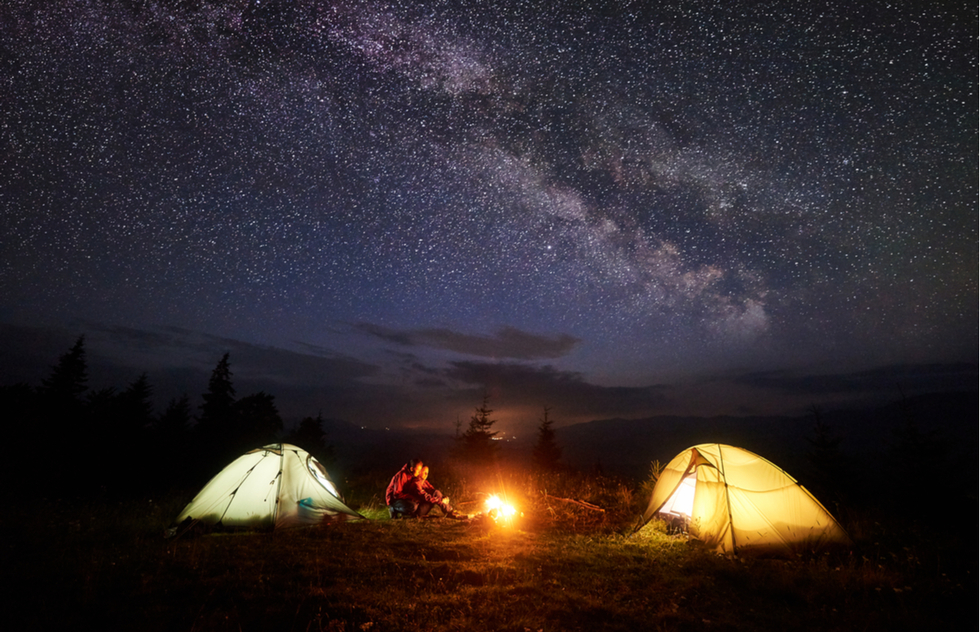The smartest way to avoid mishaps in the great outdoors is to go camping with people who know what they're doing.
Let the rugged types in your friend group take care of tent-pitching and water-purifying. Maybe you could learn the chords to "Take Me Home, Country Roads" to play on the guitar around the campfire? That's just as important as fighting off bears, right?
But if you don't know any Eagle Scouts or if your vocal stylings would enrage grizzlies, the U.S. Bureau of Land Management (BLM), which oversees nearly 250 million acres of public lands, has launched an instructional program called "Get Primitive" to acquaint novice and out-of-practice outdoor adventurers with the basic skills needed for hiking and camping in backcountry wilderness.
The advice in the agency's series of free articles, videos, and other content is intended for use on undeveloped nature preserves but should come in handy at national and state parks as well as private campgrounds.
Crucially for newcomers who are discovering the joys of outdoor recreation for the first time, the bureau promises not to assume any survivalist know-how on your part.
"We’re going to break things down for you Barney style," reads an early Get Primitive installment, referring to the big purple dinosaur of PBS fame, "to ensure you have the essential skills you need to get away from the crowds and get that much-needed nature respite."
One of the first things to know, according to the BLM, is how to find the best spot to pitch a tent.
Before leaving home, you should familiarize yourself with the Know Before You Go section of the Bureau of Land Management's website, which covers an array of safety matters relating to fire, floods, wildlife, poison ivy, and other hazards.
And to avoid becoming a hazard yourself to the natural environment, bone up on the seven Leave No Trace principles.
Once you've headed into nature and scouted a scenic spot to set up your tent for the night, there are three mistakes that are easy to make. Here's how to get around them.
Mistake #1: Choosing Bumpy Ground
Obviously, you'll want somewhere that's flat without pine cones digging into your back. But your eye might not spy every potential source of discomfort. That's why the BLM recommends that you "grab your sleeping mat out of the car, lay it out, and lay on it for a few minutes to see if any rocks, pine needles or anything else is poking you."
If things feel relatively lump- and slope-fee, you should be good to go.
Mistake #2: Creating an Unintentional Sauna
If you leave your tent exposed to sunlight, you're liable to return after a day of hiking to your own portable greenhouse with an unbearable amount of heat trapped inside. So when searching for a tent site, "look for natural outcroppings of rocks or high trees that provide shade," the BLM advises. Those barriers will provide protection from the wind as well.
Mistake #3: Getting Too Close for Comfort to Fire or Water
You want to stay near a water source and your campfire, but you don't want to be carried away in a flash flood or set aflame by flying embers. The federal government's outdoor pros recommend picking a tent location about 200 feet away from those sustaining yet dangerous elements (skip areas altogether that look like they might flood when it rains).
As for pitching the tent itself, the Bureau of Land Management will walk you through that process in a future Get Primitive installment. Follow the agency @BLMNational on Facebook and Twitter to make sure you don't miss any helpful pointers.
In the meantime, here's a step-by-step video tutorial from North Carolina State Parks on how to set up a tent.
If tent camping still feels like too much to handle, maybe an RV is more your style. For help with that type of outdoor vacation, read our first-timer's guide to renting an RV and our tips for finding a campsite for your rig.






